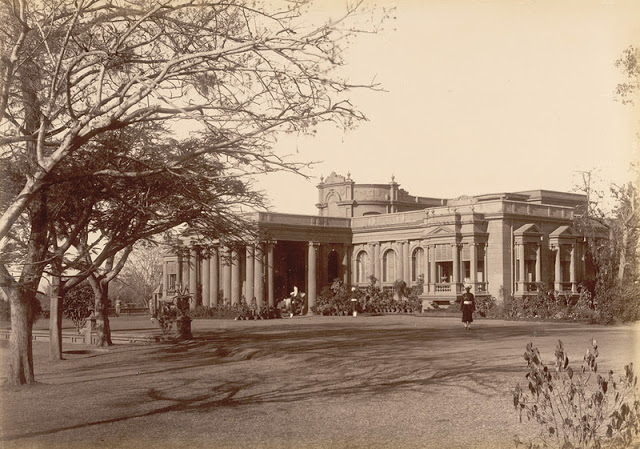Behind the gates of the powerhouse of the State
Quite recently, the official residence cum office of the Governor of Karnataka was open for public viewing around Independence Day week for a few days. This initiative was taken in 2018 by Shri. Vajubhai Vala, the present governor, to showcase the heritage building and involve people in the fervour of the Independence Day celebrations.
Not wanting to miss this opportunity, I registered online and made a visit to see this heritage structure which is otherwise only open for government officials, diplomats and high-profile visitors.
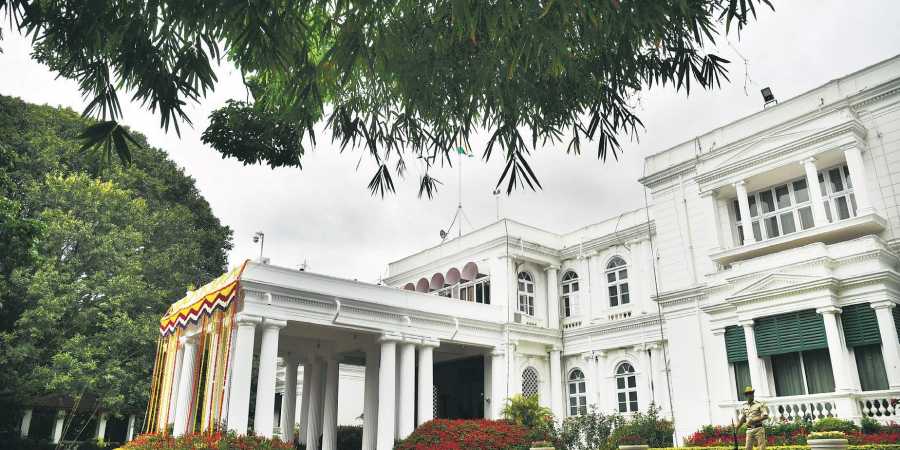
A little history to this building – The Raj Bhavan was constructed as a private residence of Sir Mark Cubbon who served in the British army from 1832-1862, making him the longest serving commissioner of Mysore State. The structure came up somewhere between 1840 and 1842, as a single storey building designed to suit Cubbon’s personal tastes which included a garden and a stable for around 50 horses. After his passing the building was purchased by Lewin Bentham Bowring, Cubbon’s successor on behalf of the Mysore state.
With the rendition in 1881 when the power was transferred from the British to the Wodeyars, the building came to be known as the Residency, occupied by British Residents till the time India got independence. (The premises of the current State bank of India on Residency road served as the Residents house before it was shifted to the Raj Bhavan)
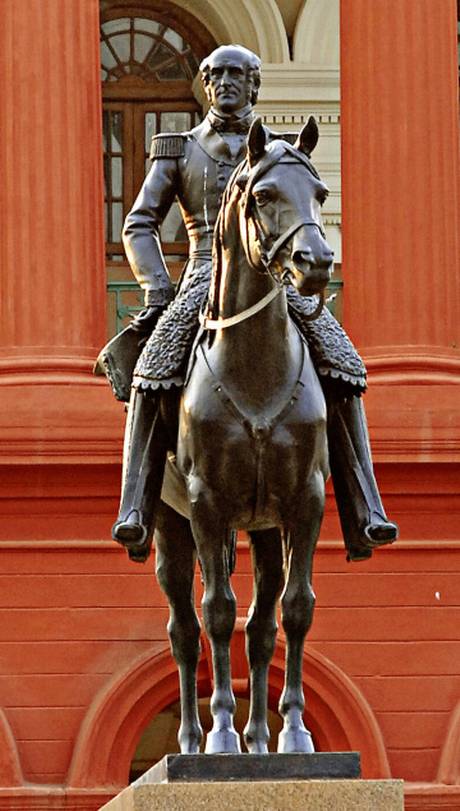
Over the course of time, more than 20 residents came to occupy it making a number of alterations and additions to suit their needs. Distinguished guests at the Residency included the Viceroys of India to members of the Imperial family.
Post-independence, the Residency was declared the ‘Raj Bhavan’ meaning the Bungalow of the Governor. Jayachamaraja Wodeyar, the erstwhile Maharaja of Mysore was appointed as the first Governor of the State. However, the Wodeyar having his own bungalow in the city – the Bangalore Palace, chose to stay there instead. From the appointment of the 2nd governor onwards, all of them came to occupy the Raj Bhavan.
On the day of my scheduled visit, I carried my Aadhar card as the ID proof and after a brief security check, entered the Iron gates of the Raj Bhavan. While the bungalow is very much visible from the entrance of the main gate, it’s the greenery around takes the limelight.
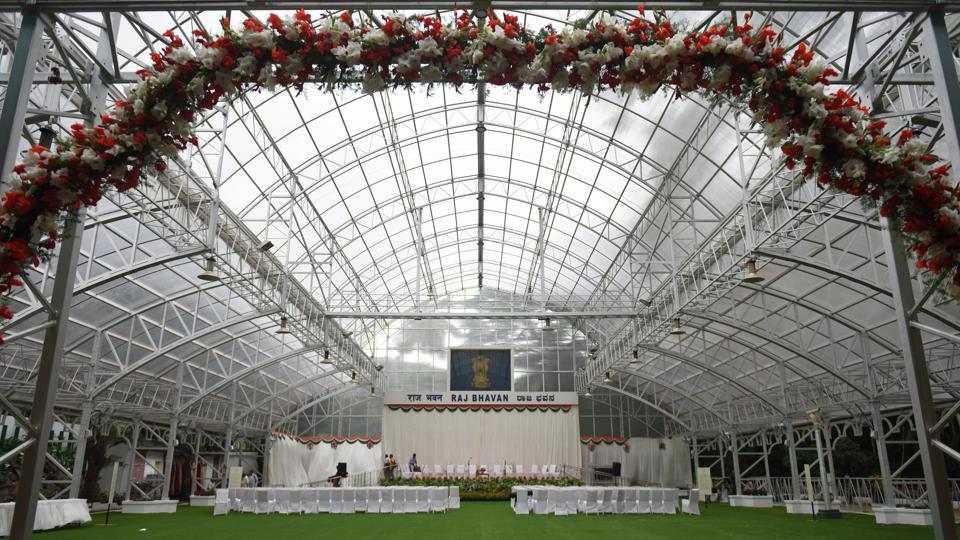
In centre of the huge sprawling lawn, stands a large glass house, where the State functions are officiated. On a centre stage set up, the military music band was performing. Visitors entering were first directed to the refreshment stall for some tea/coffee and biscuits while we waited for further instructions from the volunteers on how we would proceed about.
A guide under the Tourism department escorted the first 30 people and gathered us around for an introduction and then began the tour inside the premises of Raj Bhavan.
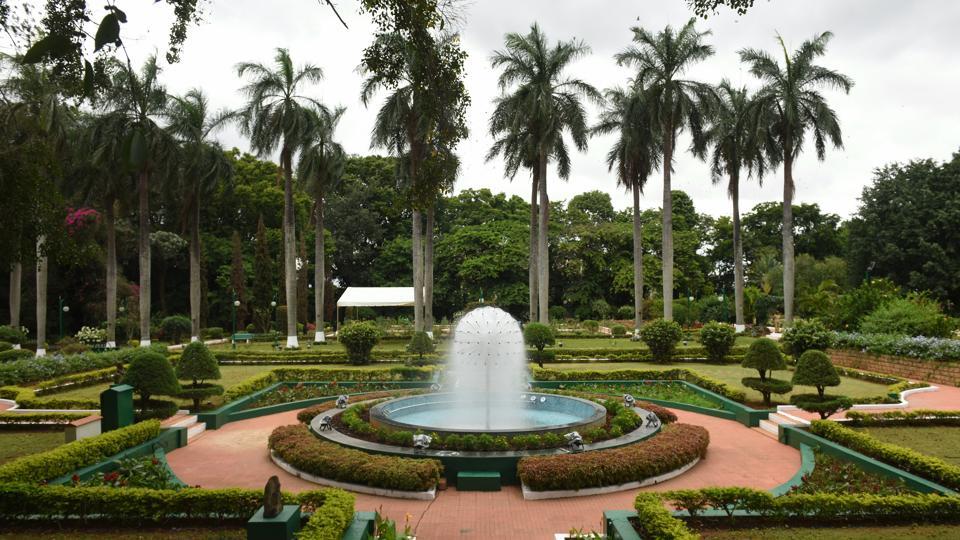
We were first taken around the garden space which is 14 acres of land out of the 16 acres of the total area, the rest being built up space of the bungalow. The garden was quite impressive and designed in a way that would block out any noise from the vehicular movement outside the walls. There were several species of flowers, bonsai and some rare trees including a Sandal wood tree and a Rudraksh tree. A small temple intertwined into a tree, dedicated to Bhoodevi goddess lies inside this garden space. The entire area is surrounded by high walls, but on one side you can see portion of the Vidhana Soudha rising above it. We were told that there used to be an entranceway connecting the Residence and the Parliament house, but was later done away with bridging the compound wall.
Three huge fountains with the view of the Bungalow is also amongst the greenery, and one can only imagine the blissful mornings the governor might experience walking around here. Twelve Royal Palms in two rows planted during the British rule, acts as a pathway to the bungalow, and statue of two lions with the head of the elephant lead to the main entranceway to the building, adding a touch of the Imperial royalty to the architecture.
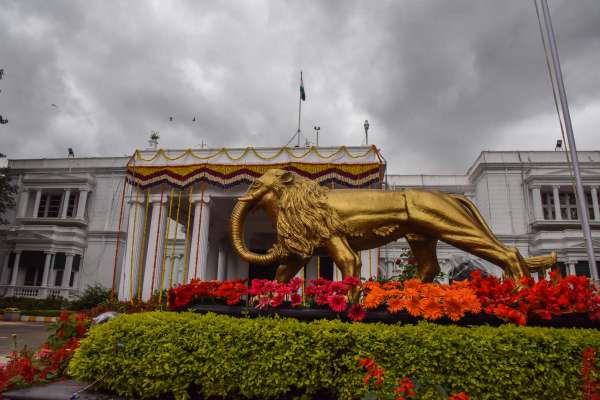
The building looks quite impressive and is well preserved in its colonial style architecture with pillared entranceway and large windows. Additions to the original building were made post-independence and is so well integrated that you can hardly notice the first floor and two wings that have been added on much later to this 19th century structure. The left wing to the side of the main entranceway acts as the governor’s residence while the right wing is used as the office space. There is also an additional building where rooms were built for guests who include government officials and foreign dignitaries. There are nineteen of these rooms named after major rivers and mountains like Cauvery, Brahmagiri etc.
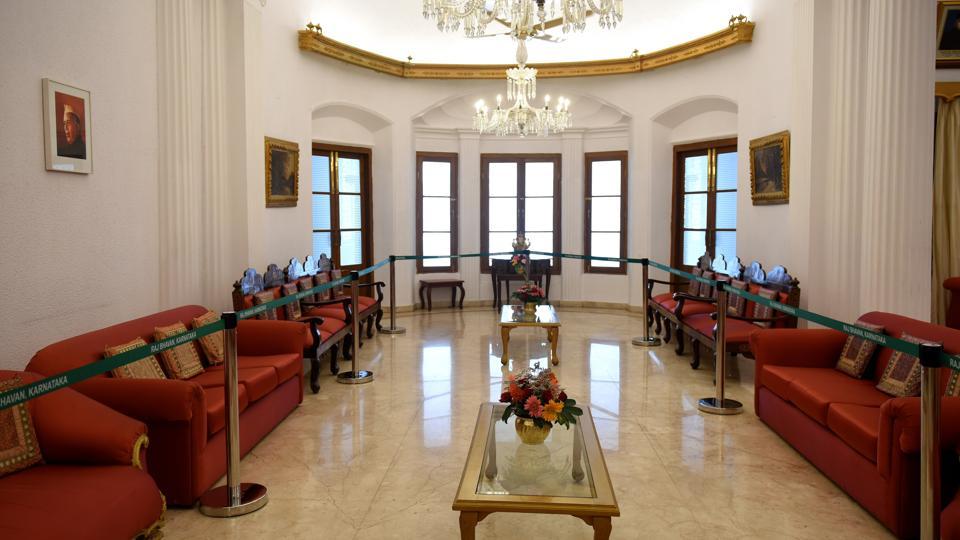
We were shown around only 3 spaces inside of the building, beginning with the dining area. This is part of the old structure with high wooden ceiling and a long dining table with chairs at the centre. The walls of this room are adorned with paintings of British India done in the 18th century. It provides for a good insight into the landscape of India done by several British artists post colonisation. Leading from there is a passageway that enters into lounge that serves as the waiting room for the VIP guests. Along with several brass artefacts displayed here, are photographs of presidents and prime ministers who served India after independence. From here we were escorted to the banquet hall where we were shown a short video about the governor’s message to the people.
Overall, I was quite impressed by the arrangements done to accommodate the public to this Government building which was open for a few days of viewing only. The security measures were also well in place. The visitation was through online registration only, after which a notification would be sent via email confirming the timing and date. There were several volunteers on the inside to ensure the smooth facilitation of this experience.
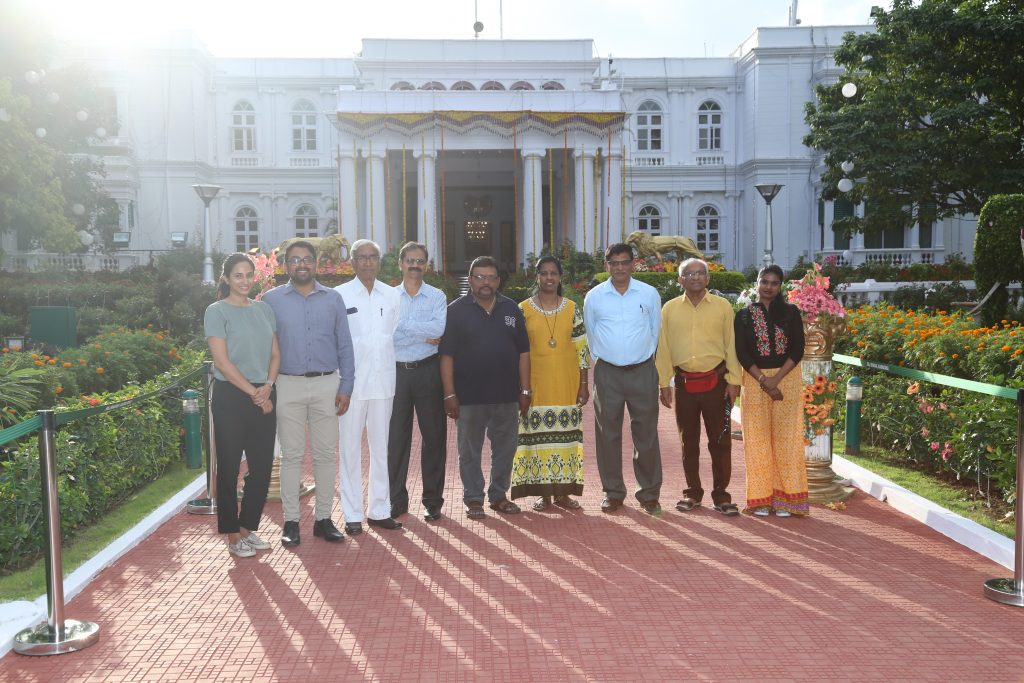
This concluded the tour for us which lasted about an hour, and many satisfied faces who would now boast to the others about their time spend in the residence of the Governor.

